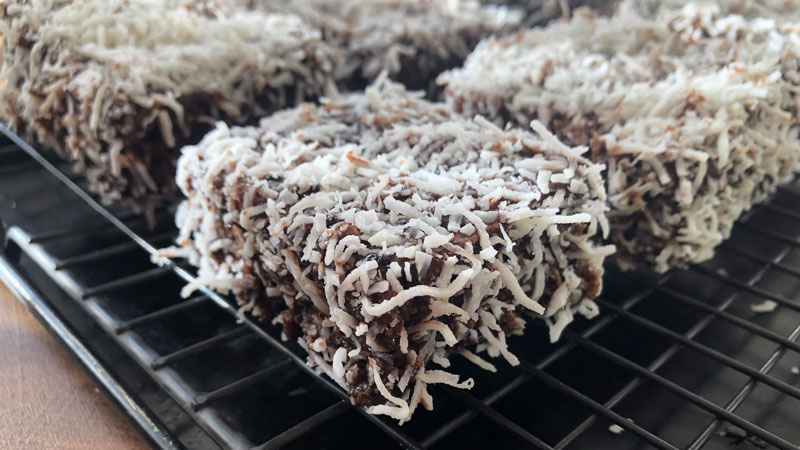


So the story goes that this iconic Aussie treat was created in the late 1800s in the kitchens of the Queensland Governor, Lord Lamington, to feed unexpected visitors. I'm not sure about you, but for someone to invent a brand-new dish, I feel as though but they were no ordinary pop-ins. The original lamington must have made a bit of a splash, as a recipe appeared in print as early as 1900, and by the mid 1910s, they'd become a staple of baking competitions at regional fairs. So you could say they caught on like... hot cakes?
Basically, a lamington is a cubed piece of cake dipped in chocolate and rolled in coconut. Layers of jam and cream are often found sandwiched in the middle, however there are pro-filling and anti-filling camps who feel strongly about the rightness of this addition. Controversy abounds!
This cook is based around a sponge cake, but butter cakes will also do the trick. Your icing can either be based on melted chocolate, which will give you a thicker coating, or cocoa, which seeps ever so slightly into the lamingtons to give it a softer texture.
So jam or not to jam? Honestly I'm fairly agnostic on this, but I've gone jam-free for this version mainly for a couple of reasons: officially, I'm hewing to the fairly traditional line, as no jam appears in any of the original recipes, but really it's because I'm quite crap at cutting things in half. If you do want to go down the cream and jam route, just the cut sponge in half lengthways once it has cooled down, spread one side with cream and the other with jam, then sandwich together before you start assembling. Make sure you don't go too heavy on the good stuff, otherwise it will ooze out when the cake is being coated.
Also, make sure your cake is completely cooled before you start assembling your lamington, otherwise your cake will collapse before you finish icing up. You can always store it in the fridge for a couple of hours or cook it the night before if you want to ensure you're building from a firm foundation.
MAKES
12
PREP
50 minutes
COOKS
20 minutes
Sponge cake
Icing